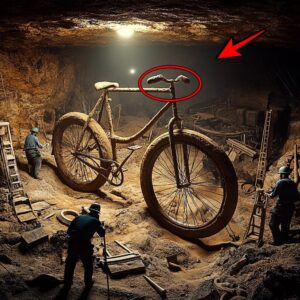Foot Box of Hawara Mummy Reveals Captive Enemies Depicted Beneath FeetA remarkable artifact has been discovered in Hawara, Fayum, Egypt: a mummy’s foot box depicting captive enemies on the bottom of its feet. This unique find dates back to the Roman era, around the 2nd century CE, offering a fascinating glimpse into ancient Egyptian burial practices and their symbolic meanings.

Funerary Equipment. Mummy cartonnage, separate casing for feet. The bottom of the foot-case is decorated with two bound and naked captives: a Libyan on the left and an Asiatic on the right. The two are tethered together by a chain. The Libyan is identified by his shoulder-length hair, curled at the end, and his long beard.

He stands on his right foot, his left leg is raised and bound to the back of his right thigh and the arms are held together at his back and tied together at the top. The Asiatic can be identified by his short wig and pointed beard. He stands facing the Libyan but is bound in a different way: his wrists are tied behind his back and his right leg is raised and tied in front of him to his left thigh. These people were two of the traditional enemies of Egypt.

Their image trampled underfoot was initially reserved for royal iconography but by the Roman period the motif was common on the foot cases of private individuals. Between the two captives is a rectangular panel decorated with a floral motif. The front of the foot-case is divided into panels decorated with rosettes, lozenges and wadjet eyes with a central lotus flower and bud motif. At the top are two gold feet, a reference to the use of gold in the embalming process, and two bands perhaps representing the lower section of a garment.

Some examples of foot-cases show the sandals but on this particular example the feet are bare. The feet are surrounded by cross-hatching, decorated in diagonal bands of black, pink, blue and white pigment. Production Place: Egypt. Find Spot: Hawara, Egypt. Painted plaster, length 25.3 cm, thickness 14.5 cm, 30 B.C. to 100 AD. Roman Period. Notes: The mummy to which the foot-case belongs was found by Sir William Matthew Flinders Petrie during his excavations at Hawara in the Faiyum. It was placed within a two-room tomb with five other bodies, a further two being placed one on top of the other in a smaller chamber. Petrie wrote in his publication of the finds:





